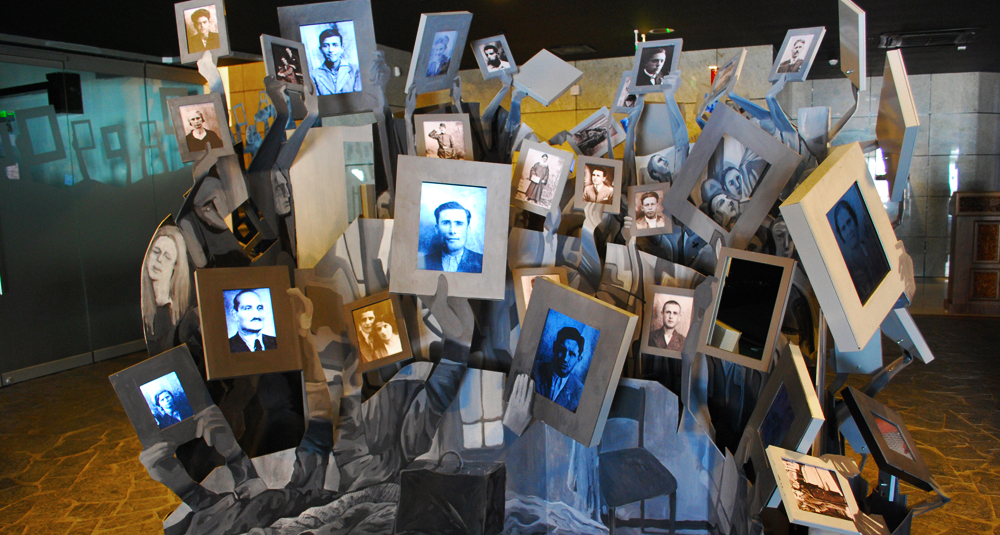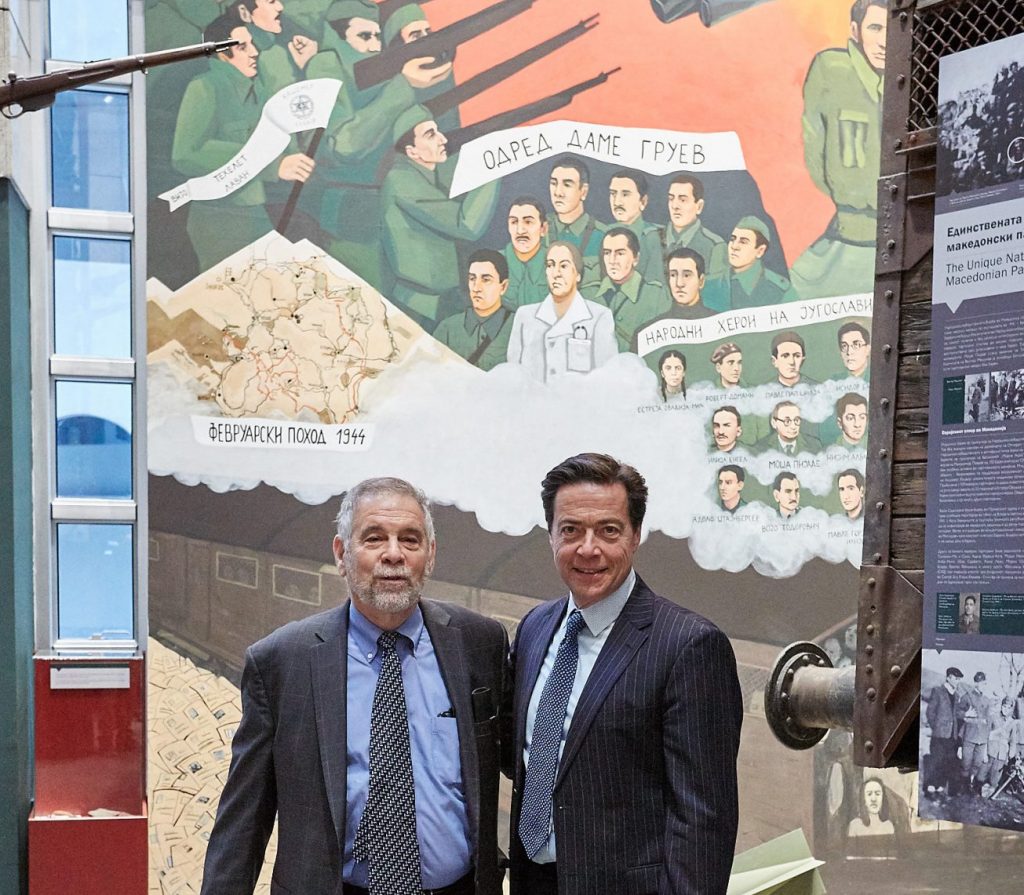It’s been six months since we opened the permanent exhibit at the Skopje Holocaust Memorial Centre opened in Skopje, North Macedonia. Built on the site of the old Jewish quarter of Skopje, in the heart of the city just opposite the Supreme Court, the Centre was built to make a statement. The Holocaust Memorial Centre was coming to take part in the challenging discourse of North Macedonia’s extraordinarily diverse society.

Indeed, while every project has its own unique qualities, this project stood out to us for two main reasons:
1- The incredible local history of Jews in Macedonia stretching back all the way into antiquity which all but disappeared in a matter of weeks in 1943, and
2- The heightened relevance of the issues at hand to modern-day challenges within North Macedonia itself.
The government of North Macedonia, by supporting and encouraging this project, is bucking the recent trend in Eastern Europe that seeks to hide or ‘explain away’ the local aspects of the Holocaust. Rather, Skopje was choosing to take history head-on, dealing with the country’s own history as it relates to the Holocaust and creating an opportunity for self-reflection.
 And that is maybe the most critical point with regards to the actual design of the museum and exhibit. Historical museums, especially those that deal with challenging subjects such as the Holocaust, should not just be memorials to the past – but rather important tools to encourage discussion and inspire us to learn from the past in order to improve the future. Visiting a historical museum should cause us to pause, question our assumptions as well as those of the society we live in and consider what role we can play to improve the world around us.
And that is maybe the most critical point with regards to the actual design of the museum and exhibit. Historical museums, especially those that deal with challenging subjects such as the Holocaust, should not just be memorials to the past – but rather important tools to encourage discussion and inspire us to learn from the past in order to improve the future. Visiting a historical museum should cause us to pause, question our assumptions as well as those of the society we live in and consider what role we can play to improve the world around us.
When designing the exhibit, we were well aware that we had to tell the historical narrative in a way that would connect to the multi-ethnic country of North Macedonia. We had to ensure that discussion about the struggle with xenophobia, prejudice and racism would be central to the experience so that, in the words of my partner Dr. Michael Berenbaum, visitors would “remember the past in order to deepen our ethical commitment to the future.”
As museum exhibit and memorial designers, the real reward is the critical role we can play in helping to teach and inspire change in the next generation.

